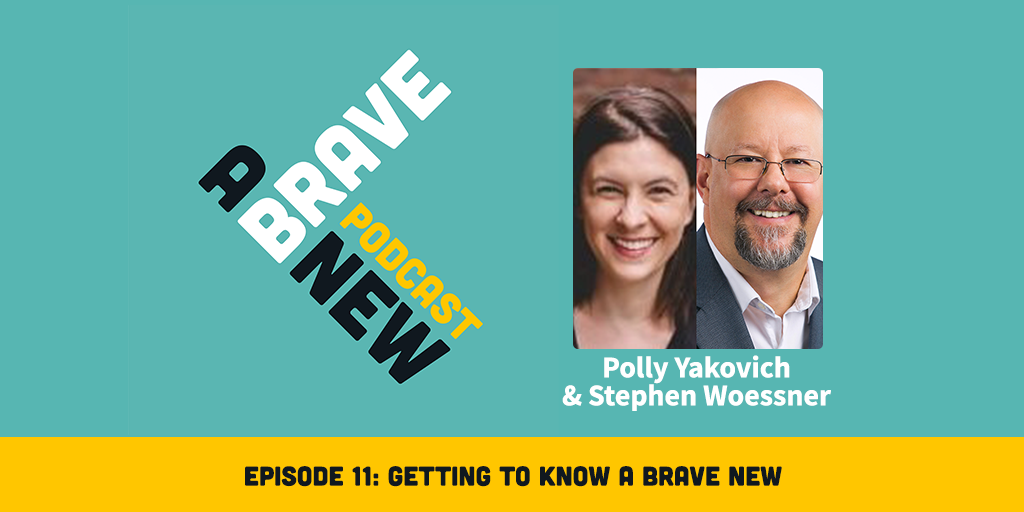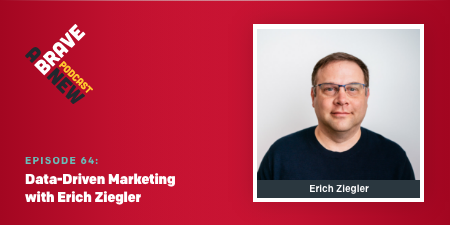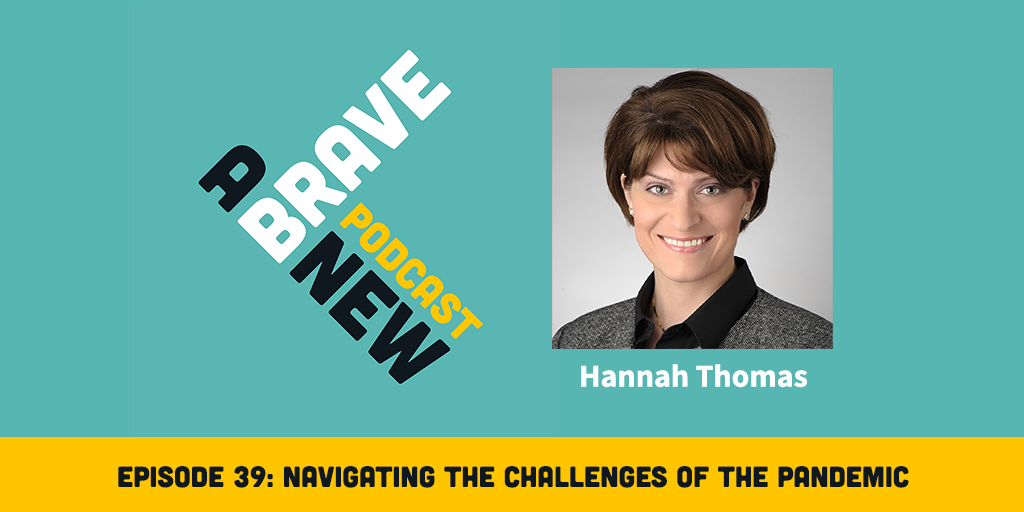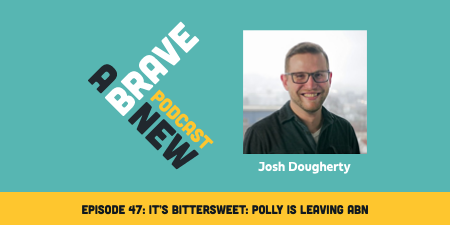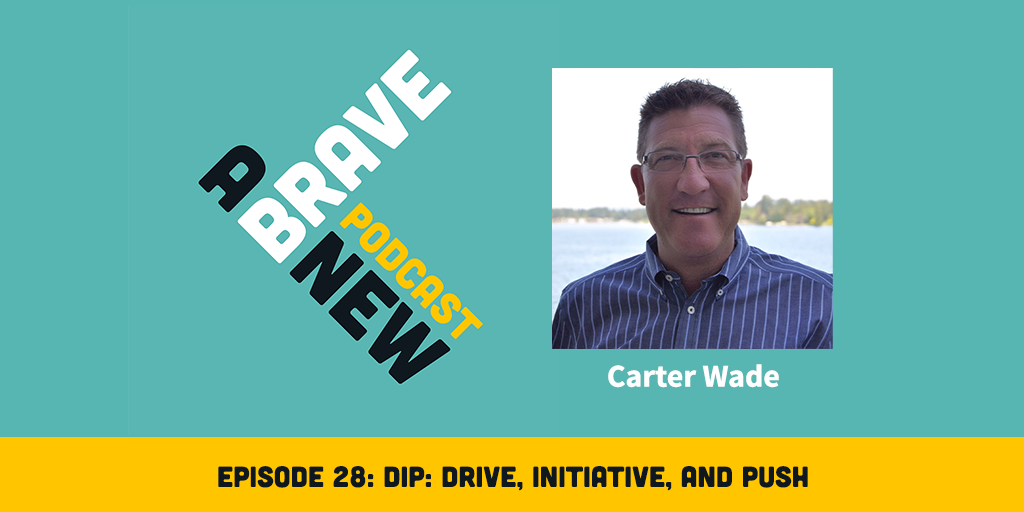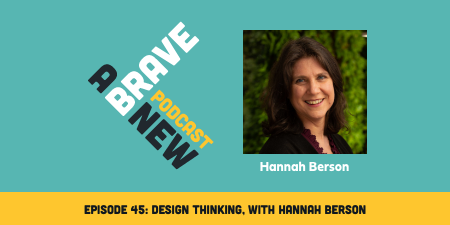Paul Daniels is a keynote speaker and Founder & CEO of Peripheral Thinkers™ - a collaborative think-tank– where entrepreneurs, business owners, and corporate leaders learn, share, and apply lessons that propel their companies beyond obstacles and change the trajectory of industries worldwide.
He is also the Chief Revenue Officer for Intelligent Contacts (a communications and payments SaaS company), Board Advisor for two start-ups, and author (book release May 2022).
Paul was labeled stupid, slow, lazy, and a daydreamer as a child. Undeterred, Paul has successfully applied lessons from one experience to the next. From personal to professional. Industry to society. Battlefield to cornfield. His unique perspectives on challenging conventions and creating unlimited paths to success, regardless of market conditions, have influenced companies of all sizes, including GE, UnitedHealthcare, Atos, WebMD, and AT&T.
Five decades removed from his childhood labels, Paul's achievements as an executive, entrepreneur, advisor, inventor, and speaker span two dozen industries, 27 countries, and more than $2.3 billion in new annual revenue.
What you’ll learn about in this episode:
- Gain a basic understanding of peripheral thinking.
- Learn how peripheral thinking can drive innovation.
- Learn how removing your focus from the challenge you face to focus and learn about things on the periphery of that challenge can lead to breakthroughs.
- Discover what a baker in Bulgaria and JFK have to do with innovation.
- Uncover practical steps to take to start building an idea repository that you can leverage to solve difficult problems in unique ways.
- Learn how peripheral thinking can help you pivot quickly to react to an ever-changing business environment.
- Take away actionable steps to start exercising your peripheral thinking muscles.
Additional Resources:
Show Transcription:
Intro: Welcome to A Brave New podcast. The podcast all about how big ideas, brave thinking, and marketing smarts help businesses grow. Here is your host, Josh Dougherty.
Josh: Hi everybody. This is Josh Dougherty. I'm your host for A Brave New podcast. So happy to have you here today. Paul Daniels is with me today. Hi, Paul.
Paul: Hey, Josh. I'm glad to be here. Thanks for inviting me.
Josh: Yeah, of course. Paul's the chief revenue officer for Intelligent Contacts, a communication and payment software company, really has some deep experience in healthcare to hospitality, to manufacturing, to mining, high tech to high fashion. He's worked with clients all across the board. You may have heard of some of them like, General Electric, United Healthcare AT&T and really has experience that spans four decades, numerous industries, numerous countries, and really excited to have him here. He's also on the board of advisors for several companies and the founder of a consulting group. So Paul, really excited to have you and to kind of have your wisdom on the podcast.
Paul: Thank you.
Josh: Get the chance to learn from you today.
Paul: Yeah, it's my pleasure, Josh. So long time listener, first time guest.
Josh: Yeah, of course. I'd love to dive in and hear a little bit. Obviously, you talk a lot about this concept of peripheral thinking, but before we get to that, I'd love to hear a little bit about your background.
Paul: Yeah, you bet. I worked my way through school, took me five years. So I started working full time at 18 and what that did was helped me ... Once I graduated with my undergraduate, it gave me a chance to apply some wisdom already that I'd gained in those five years. Fast forward, I started my first company at age 25. It was a sportswear firm and learned all the things that entrepreneurs learn about starting something from scratch. And from there, I sold that company and I went into large corporate environment. So a 100,000, 200,000 employee kinds of large global organizations and worked my way through a variety of roles there, learned a lot more about business, and then was able to start to connect the dots between small startups and large organizations. And it also opened up doors to, like you said, serve clients in more than two dozen industries and 26 or 27 countries.
Paul: Fast forward to today. I love being part of Intelligent Contacts and being the chief revenue officer there, focused a lot on our partners and acquisitions, the companies that we'd like to buy and work with. I've kind of worked across the board. A lot of it's been focused on the revenue side, generating revenue, whether that's through sales, or partners, or a variety of different ways to generate revenue for companies. But I've also done operations. Obviously, marketing as part of sales. I've run divisions of companies. I still have a company. I started in 2007. You mentioned, it's an advisory firm, which gives me a chance to spend time with leaders of small, medium-sized businesses and help them grow their business using, I guess this is a nice lead in, peripheral thinking.
Josh: Yeah, of course. And I think like it's so nice to ... You have such a varied career and experience across sectors that it's ... I mean, it probably benefits to the peripheral thinking, right? You've been able to dive into some places pretty deeply.
Paul: Yeah.
Josh: I know you spend a lot of time talking about those benefits of peripheral thinking as a way to resolve challenges creatively, build innovative ideas, and more, but I'd love to, before we dive into specifics, have you share a little bit about what really peaked your interest about innovation, revolutionary ideas to begin with? Obviously, I think it's part of the entrepreneurial journey and the business journey in the area that you're in.
Paul: Yeah.
Josh: But like, where did that interest come from initially?
Paul: Yeah. At a very young age, as soon as I got into school, I was kind of labeled as slow, dumb, lazy, kind of a daydreamer. And I sure didn't see that way, but those are labels that followed me even into college, into postgraduate work, even to entrepreneurial ventures. I started studying very early. The people that were successful that were, as you said, somewhat revolutionary innovators and looking at what were their thought process? How did they come up with these ideas that changed the trajectory of their own profession or in some cases, industries. And then time went on, I would still get these things like, “Well, Paul, that's kind of a crazy idea. I'm not really sure that's going to play well in our market.”.
Paul: And at age 40, I was diagnosed with dyslexia. At age 40, it was my turn to be diagnosed with dyslexia at the same time our daughter was diagnosed and the light bulb went on. I went, “Oh, that answers so many questions.” And then the people that I'd been studying and researching, following and learning about, these innovators, their north star was innately found within them. And I realized, “Oh, they think like I think.” And dyslexia, though it's a learning difference, it's not a disability. It has a set of skills that are found in about 10% of population. And so I will go into a bunch more about that, but it's interesting just to see the correlation between innovation and dyslexia, and you can look across history and some of the most prolific innovators are dyslexic. Einstein, Henry Ford, Ann Bancroft, Agatha Christie, JFK, Richard Branson, Muhammad Ali, just a bunch of these names. And as I learned about that, we've since cracked the code on what those skills are.
Paul: And so peripheral thinking is the byproduct of taking these skills that dyslexic are born with, that are called super skills and mirroring those for neurotypical, those people that don't have dyslexia, neurotypical people, because these are learned skills. They can be learned. You don't have to be born with them in order to use them. And that's what got me started and that's what I've been using. Now, I can put names around it and not just coaching and advising companies on new ideas and innovation, actually teaching them how to innovate beyond their challenges and do it sort of on their own. It's the best gift in my life is to be able to see the light bulb go on for other people.
Josh: Yeah.
Paul: Yeah. It's exciting. Very exciting stuff.
Josh: It's like amazing too, when you can actually put a name around a set of skills. And instead of someone ... I mean, I've sat in a lot of boardrooms myself where they're like, “We need to be more innovative.” And I'm like, “Great, that's a good idea.”
Paul: Right.
Josh: We probably should not just be focus on this idea straight on. We need to kind of think around it and actually work towards innovative ideas versus just working towards that idea.
Paul: Yeah, exactly. So there's a set of skills and they are learnable, absolutely. And I'm happy to share some of that stuff with us today, if it's a-
Josh: Yeah.
Paul: Yeah.
Josh: Yeah. I'd love to hear some of some about that. Let's dive into peripheral thinking. Tell us about the basics. I know this is the set of skills you just mentioned feed into that. So you may go back and forth, but I'd love to hear the basics from you about what peripheral thinking is and how it works.
Paul: Sure. Thank you. Peripheral thinking is an umbrella, if you will, of these super skills that again, mirror the dyslexic super skills. And if you think about the way that we go about business, for the most part, when we're facing a challenge or setting a goal or whatever that is, we typically ... Let's say a challenge. We're looking at that challenge and we take a look at what's keeping us from reaching our goals. So we look beyond the challenge, what's that goal that we're trying to achieve, our revenue, our numbers, the number of clicks, the attention that we gather from our marketing efforts. How do we achieve that in light of this challenge? Then we check to see what we've done in the past that's worked, right? What approaches have been most successful? And then we'll take a look at our current sort of surrounding environment. What are my peers doing? What's the competition doing? What are the trends in my industry and the best practices? So it's a very common approach. It's logical. It makes sense. It's conventional.
Paul: What we find is that conventional wisdom when taken too far or relied on too heavily, becomes a crutch. And in some cases becomes the ban of your existence.
Josh: Totally.
Paul: I'm not saying that you should get rid of best practices, but think of it this way, if everyone is following the same best practices, what's the differentiation? Where is that? As an example, there's a quick trick we can do if you're up to five-minute lecture.
Josh: Yeah, let's do it. I'm excited for this.
Paul: Okay. Excellent. All right. So if you're watching this, great. If you're listening to this and you happen to be driving, I'll cue you when you shouldn't do what I'm describing.
Josh: Pull over to the edge of the road, please, if you're going to participate.
Paul: Just imagine.
Josh: Yes.
Paul: So we're going to go on a little imaginary journey here together. We're standing in a mountain field. It's covered with wildflowers. The sun is warm on your face. The air is crisp and cool. No, you don't see Julia Andrews singing, The Hills Are Alive, but it's kind of that setting. And then as you look in front of you, right there is your challenge. It's coming up out of the ground and it's this monolith challenge. While we're standing there if you were to cover your eyes with your hand. So if you're driving, don't do this, but you cover your eyes with your hand. Now, we're going to combine both the imaginary environment and the setting that you're in right now.
You can't see what's right in front of you, but what can you see? Well, you can move your eyes up. You can look down to the left, to the right. And so what I challenge you to do right now is find something that you haven't noticed before. So I'm sitting in my home office. Okay, I found something. So if you find something, great, that's the goal. Okay, so you can take your hand away. That peripheral vision. You saw something that maybe you didn't see before, but you may not be able to make out all of the details. So now with your hand down, you can look at that spot. For me, it's a unique shadow that's on the wall above the window. And so I can look at that now. And as I look at that there's detail. That's peripheral awareness.
If we go back to that mountain field and instead of staring at the object or the monolith in front of you, we move say, theoretically, 100 yards to the right. And we look at the object or the obstacle from that perspective, what does that enlighten for us? What more can we learn? Well, we'll see more details, probably the depth of the monolith. And we could do that same thing and move all the way around that object and look at it from different perspectives, a 360 degree review. We've all heard of that. Okay. So that's awesome. And you do have more perspective by doing that. You can even take your team on that same journey, but the challenge is that it's still from your perspective, maybe filtered through your team's collective set of experiences or their truths. Peripheral thinking, now we moved to that same spot, 100 yards to the right, but we're not going to look at our challenge. We're going to face the other way and look around. Well, what do you see?
Well, likely you see other objects, maybe some terrain change. Maybe in your imagination, you do see Julie Andrews singing, The Hills Are Alive, and there are other people there. And those other people aren't part of your team or your network, and they're not part of your industry. So how do they get where they are? What are the objectives that they're trying to achieve, obstacles they've overcome? How do they approach overcoming those challenges? And what lessons can we learn from them? When we actively look for solutions, theories, principles, lessons while in the periphery, you engage in this overall peripheral thinking. And there's a specific skill that goes along with that example, but it's taking yourself out of your normal market industry. This is the way it's done. And even what is called lateral thinking, which is kind of moving to the sides. Peripheral thinking says, “I'm going to go into this side and I'm going to have an open mind and listen to and learn from those people.” There's a guy that works in hardware aisles at Home Depot just half a mile from our house.
Josh: Yeah, yeah.
Paul: Mike, and I've learned more from Mike in the last couple of years than I have from a lot of people. Peripheral thinking is the collection of input, regardless of the source, it's understanding the elements of those, and then being able to apply bits and pieces of those experiences in new ways to approach your existing challenge or achieve your goal.
Josh: Yeah.
Paul: I like to say that there are more answers than questions, and in this case, there are more choices than challenges. You can find bunch of choices. And as we look back ... I'm sorry, I'm going on.
Josh: That's okay.
Paul: But as we look back at all of those innovators that I'd mentioned before, what they did to achieve something that had never been done before is they took great ideas from other places and brought those in. And that's how they created new things. When JFK said, “Hey, we're going put a person on the moon by the end of the decade.” Conventional wisdom said, “You're going to do what? Not going to happen.” But peripheral thinking said, “Oh, awesome. Let's get going.” And that's exactly what NASA did.
Josh: Yeah.
Paul: They gathered all this information from virtually every industry in the world in order to weave new technology and materials and such together to place a person on the moon.
Josh: Yeah. I find this so interesting because I think it's so fundamental to change your perspective, to stop thinking and to let your back at this, the way your brain works in the background, start firing in a way that maybe you don't let it fire as often as you should, right? To ask questions, all those types of things.
Josh: Do you find that this peripheral thinking works from conversations to reading? There's all this interpersonal stuff. Is there a specific way that's most effective to engage in that peripheral thinking, or is it really just looking at the information sources and immersing yourself into these other areas?
Paul: Yeah. The first step that I share with the people that I advise and coach is make contact with someone that is not part of your industry. In fact, that you can't even imagine would be part of your industry. The example I share about the difference between conventional wisdom and peripheral thinking is what does a baker in Bulgaria have to do with a foundry outside of Philadelphia? What does a movie theater in Moldova have in common with a distribution center in Denver? Don't know, what does the flu in China have to do with global unemployment?
Josh: Turns out a whole lot, yeah.
Paul: Right. Yeah. So at first it's like, probably not much, but peripheral thinking says, “Oh, wait, there's got to be something there.” And no, you don't have to go to a baker in Bulgaria though, if Ivan is listening to this, hi Ivan. That's my friend who is a baker in Bulgaria, owns six or seven bakeries in Bulgaria. I love chatting with him because I learn a ton of things about culture and the context that he lives in and how he's created this business and run this business from scratch. So it's getting out of your comfort zone and getting into other industries.
Josh: Yeah. What does this change of perspective really do to unlock that innovative thinking, kind of what's happening in the background?
Paul: The first thing is get out of yourself and get over yourself. And the second is be open to ideas as they come, just in conversation. I can watch an ice cream truck go by our home and the kids rush to it and I think, “Hmm, how did they come up with that music?” Which of course, you've all heard it and it kind of drives you crazy if you listen to it too long. But what is it about that motion, color, sound, and the fact that it's ice cream, what draws kids to that and how do we use that same excitement in marketing, or how do we use that in sales? How do we use that in operations or in legal? So it's first being exposed to it. And then just saying, what are the elements that make that successful, if it's successful, or what make the elements that don't make that successful?
Josh: Certainly makes it memorable, right? So it's like, how do you craft this memory if we're talking about an ice cream truck, right?
Paul: Exactly right. Yeah, exactly right.
Josh: Yeah.
Paul: It's first getting out and the second is capturing the content. And then the third step is now that you've got some new content and new concepts, how do you whittle those down to elements that can then be translated to achieve your goals or overcome your challenges and innovate beyond so that you have this repository of solutions and ideas at the ready, they're actionable. They're ready to go.
Josh: Yeah. The idea of the repository is really interesting because I think about even like, I know we've talked in the past about story logs and how you capture your stories and ideas and so that you never know when you're going to want to pull one of those out to tell a story to someone that's going to be relevant. This repository seems similar to that.
Paul: Yeah.
Josh: What is kind of the measuring stick you use to know if a solution is something that you want to stick in the repository? Do you have any tips where people are starting to think like, hey, yeah, I can see the benefit of, you know, for me it might be I'm in a different country traveling, maybe pre-COVID, right?
Paul: Yeah, right.
Josh: And I'm actually going to sit down and talk to someone and not try to put my Seattle Washington businessman hat on and actually say, you know, I'm talking to someone in Peru who lives in the Sacred Valley, who has Incan ancestry and I'm going to try to like see the world from their perspective ...
Paul: Yes.
Josh: ... as unlimited way I can.
Paul: Yes.
Josh: But how do I know which of those ideas that are coming up or those ideas should be thrown into a repository and start to be cataloged?
Paul: Right. From the dyslexic's perspective, which all this came from ...
Josh: Totally.
Paul: ... we can't help it. Everything goes in, everything. The good, the bad, everything goes in.
Josh: Totally.
Paul: We see things that most people miss and we make connections where others would never see a connection being made and what we hear and see always reminds us of something else. So it's always there. So the answer to the question is everything goes in the repository. It's how much you want to do it. In fact, for your group, if they will connect with me and just mention this podcast, I'm happy to send the template for the peripheral resource library. And you can start today. It's even got instructions on the different segments and how to categorize things. It's one of the tools that I use with my clients that I coach. So everything goes in, but not everything's going to be applied, but it may spark an idea for something else, it sparks an idea for something else. It's that creative process. There is no silver bullet, but combined, there are a lot of really good bullets.
Josh: Yeah.
Paul: Yeah.
Josh: I think that's such a good lesson because we think a lot about marketing in the 21st century like no silver bullets ever. Right?
Paul: Right.
Josh: You've got to be doing numerous things and you have to be creating a brand that stands out in the meantime while you're doing all this best practices and doing something exciting as well that's maybe a little different to get noticed.
Paul: And something's going to have happen.
Josh: Yeah.
Paul: Another COVID is going to happen. Something is going to happen. Maybe it's Ukraine. I don't know what it will be, but I do know this, that those that embrace this kind of thinking whether it's peripheral thinking or just ... Some call it thinking outside of the box. That's too limiting. There is no box. They're never caught off guard. The clients that I've been advising on board of advisors and my own clients, they didn't miss a beat when COVID hit. Maybe two days, maybe three, maybe a week at the most, but they were back on it. And several of them have doubled and tripled their top line revenue during this last two years.
Josh: Because they were ready to pivot, right?
Paul: Right. Exactly.
Josh: In how they've been thinking.
Paul: It was never a concern that they didn't have ideas, it's just which ones do we apply at this time.
Josh: Yeah.
Paul: They were also thinking ahead so that they recognized that if there was some kind of a disruption of any kind. In this case, it was something unexpected like COVID that they were ready to change their company. Move things around instead of doing this. We still have the same skills and resources that could be applied to this. And the retraining and the rebranding was very simple for them. They're still the same great company. They just simply refocused some of their energies to satisfy a new emerging need with the same skills and tools that they had in place.
Josh: Yeah. And this benefit is huge. Being able to pivot as a company, being able to change without and making that seamless. Are there other main benefits maybe for business leaders or marketers? In addition to be able to build in that agility into their company, are there other benefits to peripheral thinking for them?
Paul: Well, sure. Many of my clients, when we talk, they're trying to innovate beyond a challenge. So if you take that peripheral thinking and that repository of content that you have, and you reference that when planning, it also gives you an insight into what the challenges were that the individual or your resource, your contact had to overcome. You may not face that challenge now, but they overcame that by doing such and such. Could they have avoided the challenge altogether by doing the same thing earlier? Well, yes.
So that's some of the things that my clients have done even before COVID. They were preparing for any kind of shift, not just market shift, employee shift. The market goes away. The product we had isn't necessarily the sensation we thought it was going to be. So what do we do? Well, we go to our repository and we look at other industries, not our own. We look for ideas. How did these innovators go against the grain? When conventional wisdom said, “There is no way somebody's going to get on the moon. There is no way that somebody's going to fly.” Well, the Wright brothers are dyslexic too. They found a way. So they thought beyond what the challenge was. The challenge was getting people to agree or just to follow them. And most of them didn't care because they knew they were going to build something new.
Josh: Yeah.
Paul: Having that mindset helps you identify what challenges may come and you already have ready, made actionable approaches, principles, solutions, lessons that you can apply to avoid the challenge and move in the direction that has the least resistance.
Josh: Yeah.
Paul: That makes sense?
Josh: That's awesome. Yeah, it makes a lot of sense. And I think it just makes me reflect on the challenge often isn't as much of a challenge if you can actually step back and think about it differently, it's an opportunity to change.
Paul: That's exactly right.
Josh: To grow.
Paul: Exactly. So I was working with a client. We'll keep it confidential who they are, but his client is a hospital in the Midwest and I was working with them in 2010. And the director of the patient engagement organization we were talking about peripheral thinking and talking about this skill called interpreting, which is kind of what we did in the mountain field. And she went on vacation and called me when she was on vacation. And the short story is she received a text when she checked into her resort and she said, “Why can't we do that same thing for patients in our hospital?” I said, “Oh yeah, you absolutely get it.”.
Paul: And so Jennifer was in Hawaii, thousands of miles. She wasn't just 100 yards to the right, she was thousands of miles away. And she thought, “Why can't we do that?” Well, you see this now in healthcare all over, right? There's lots of electronic communications. Not in 2010. She was the north star. She started it off. And now, she's the chief patient experience officer for a 20-hospital health system.
Josh: Yeah.
Paul: And now that has expanded. Texting now is in healthcare. In 2007, are you kidding me?
Josh: Yeah. For sure.
Paul: Who would something like that? Well, she did because of a hospital.
Josh: Yeah. So like say you're convinced about this and you think-
Paul: Because of a hotel. I'm sorry, not a hospital.
Josh: Hotel. Hospital changed because of a hotel, right?
Paul: Yeah, exactly.
Josh: I love that story and I love those connections because it's like that light bulb moment that I think most people want to have in their day to day work. They're not wanting to just like plot forward. They want to be able to think, “Oh, now that's interesting. I can get behind developing that idea.”
Paul: Right. So another quick story for you.
Josh: Yeah.
Paul: One of the operators of a Chick-fil-A. Are you familiar with Chick-fil-A?
Josh: Yeah, I'm familiar with them.
Paul: Right. So you're also probably familiar with the fact that they don't say, “You're welcome.” They say, “It's my pleasure.” If you say, “Thank you.” They say, “It's my pleasure.” That came from the Ritz-Carlton. One operator of a single franchise or single location was vacationing, just like my friend in the hospital, was vacationing at the Ritz-Carlton, asked somebody, said thank you and they said, “It's my pleasure.” And immediately it felt different to this person. He brought it back Chick-fil-A and now is their standard. Just that simple idea and what a difference it makes. And that's exactly what you guys do. Innovative marketing is something that's simple that you go, “Wow! Why didn't we think of that before?” Because we're thinking linearly, might even be thinking laterally, but we're not in the periphery. We're not getting those experiences and taking those experiences for the value they are.
Josh: Yeah. How does this relate into something that just popped into my mind as this idea about optimization, right? Everyone's about like relentless optimization. And as a brand strategist myself, I'm often like, “Well, you can optimize yourself to death, but that isn't actually going to like get you to acceleration as an organization.” How do you work through this concept of peripheral thinking being a huge benefit in an organization that's maybe very focused on optimization?
Paul: Perfect. Great example because it's ... I shouldn't say it's common, but it's one that we can really dig into. So optimization. If you take optimization as a category or a goal, this is the conclusion I want to achieve.
Josh: Yeah.
Paul: And I work my way back. There are six Cs that are part of this interpreting skill. I'm not going to go through all of those. And again, if you want that, that's part of the peripheral resource library. But you take the category or the conclusion that you're trying to achieve and you simplify it or you put it in those terms, optimization. Well, what does optimization look like for an automotive manufacturer? What does optimization look like for a home services company that cleans houses or cuts lawns? What does that look like? And how do they optimize in a way to achieve that optimal goal? Can I apply the best practices or the lessons of how to get the right people in the right place at the right time in front of the right materials to build this automotive part? Can I apply those lessons in a way that helps me optimize my marketing, spend my marketing effort, my marketing tactics and strategies.
Paul: So it's learning how they see optimization, breaking the elements down, and then applying it. How they see the same category as you do ...
Josh: Totally.
Paul: ... in their interest and then breaking those down into elements and applying those elements as a filter. Well, could this work? We've never tried that. Well, we're all about trying stuff in marketing, right?
Josh: Yep.
Paul: So lets A/B test it. Let's try it with it, without it.
Josh: Yeah. And be willing to embrace. You can A/B test and try out whole new ideas. Because I think sometimes this people get stuck in this concept of, okay, we've just got to focus in on A/B testing what we know, right? And what we know to be working, which ...
Paul: Right.
Josh: ... leads to, I think a lot of what you've talked about at the beginning, best practices.
Paul: Yeah. We'll optimize, the ice cream truck. One person in truck covering several neighborhoods and they've got a product that has a shelf life and how do they make money? How do they get those kids coming and screaming, “Ice screams' here.” Mom's saying, “Get out of the street. I'm trying to get money out of the pocket.” Wow! Wouldn't you love that for your brand, where they'd flock to you? Okay. Well, let's break it down. How does that work?
Josh: Yep.
Paul: We know by science, right? It's sight and sound. And then that repetition of a unique sound. You don't hear that same sound by anything that's driving up and down the street, right?
Josh: Yeah.
Paul: So is there a way to create a “sound” for your brand that optimizes the spend so that every time they hear that, see it feel it, they go, “Ooh, that's them.”
Josh: Yeah. Excellent. So I want to step back a little bit. This has been so rich. I want to talk a little bit about, you've been around in business for a long time, helping people think new ways. I'd love to hear your thoughts about where you see businesses is evolving this next year. We're hopefully coming out of the acute phase of COVID. Who knows what the future looks like, but where do you think kind of evolution is headed? How business will be growing in the next year and how do you think peripheral thinking will help them in that process?
Paul: Yeah. So we look at the current environment that we're in. And often, we look at the 23 million people that were unemployed in April of 2020, and the 200,000 plus additional companies that close their doors in 2020 and those that close their doors in 2021. What if we looked at those that grew? What if we looked at the successes that have taken place and figure out, is this something there that will help - my company? So what my clients are talking about and our company is talking about is disruption-proof, future-proof to the best of your ability. And that means being prepared, sort of prepared for anything, which means knowing your core, knowing your brand, knowing what you are and being true to that and then being able to pivot, if you will, to another market or to expand your presence in your existing market, which many my clients did. They went from doing a certain thing in their marketplace and using the tools and messaging that they had and found in that same marketplace.
Like they were serving healthcare, for instance. And they were doing say accounts receivable. Well, there weren't a lot of accounts receivables and revenue cycle management, because it was all COVID related. Government's paying, right? So the phone focus was, “Hey, I've got all these people that have been doing that, what else could we do? What other challenges are out there?” Well, the switchboard at hospitals were overloaded. They've got people that are making calls every day out to patients. Why couldn't they take the calls? And they did. So they pivoted, same people. They had the own routed to their people and they answered eight of the top 10 questions that were asked. And those that they couldn't, they did a hot transfer, transferred them back to the right organization within the hospital.
Some of those companies doubled. They increased their revenue 50% in 2020 between April and December. 50% when everyone else was closing their doors.
Josh: Yeah.
Paul: Because they thought about it differently. Obviously, we always focus on our clients and we focus on our market and what they're buying. But do we focus on everything that they're doing? Do we focus about all that's going on? The idea about the switchboard. I'm not claiming I was great. It just happened because I was at a hospital and I was waiting and I saw that the people at the reception, everyone was on the phone and they were overwhelmed. So I shared it with one of my clients and said, “Hey, this is some free advice. Have you thought about that?” “No, I haven't.” “How many healthcare clients you have?” “25.” “I'd make some calls today, wouldn't you?”
Josh: See if that's an issue, right?
Paul: Right. Exactly. It was, “Oh, I can't believe you even have it. Can you do that?” “Sure.” “Do you want us to start tomorrow?” Well, can you?” “Yeah, sure. Give us the top 10 things and we'll script it out and everything's good.
Josh: Yeah.
Paul: So it's just that awareness in saying, “Hey, there's a need, I've got resources. Can I creatively apply something new to that meeting?
Josh: And it sounds like even there's a discipline of being present enough and not just trying to ... Sorry.
Paul: Prognosticate. Yep.
Josh: To not prognosticate the future and more say like, “I'm going to be present in observing the future as it comes and respond.”
Paul: Right, exactly. So those that have created the future, I know this sounds esoteric or something.
Josh: Totally.
Paul: Those that created the future did it in the present.
Josh: Yeah.
Paul: Einstein came up with his theories in the present, using mathematics and things that were already there, applied differently. Henry Ford did the same thing. The manufacturing line is taken from other things that happened in the 1800s. I can go back to Sun Tzu's Art of War.
Josh: Sure.
Paul: BC, 2,000 years, what is it? 4,000 years ago, whatever it is. And they had the right people, the right troops and the right place, the right time in order to preemptively strike an enemy or take over a land or protect a place. It's the same process, just put for manufacturing automobiles.
Josh: Yeah. Amazing.
Paul: Yeah.
Josh: Well, thanks so much for the time today. I'd like to close out with one final question. This is something I ask everyone. I'd love to hear what do you think your superpower is? It's kind of off the wall question, but yeah, what do you think of as your superpower?
Paul: My superpower is kind of a visual thing. I connect the dots even when half the dots aren't there. So the little books, you know? Connect the dot.
Josh: Yeah. Yeah.
Paul: Even as a kid, I didn't even do it. I just look at it and tell you what it was. That's a dot, that's a tree. That's a beach scene. It's whatever. And then my dad's very creative and he would create some and he'd take away dots and say, “Now, what is it?” And I could come up with three or four things, at least one of those was going to be the right one. Well, it's this, this or this or this or this. So my superpower is being able to see things that others miss, and I love teaching people how to do it.
Josh: Perfect. Very cool. Well, thanks so much, Paul, for joining me. I appreciate your time.
Paul: Oh, my pleasure, Josh. It's been great getting to know you. I love the podcast and I'm honored that you offered me to be a guest on it. Thank you so much.
Josh: Perfect. Thanks everyone and we'll see you next time.
Outro: Thanks for listening to this episode of A Brave New podcast. Go to abravenew.com for more resources and advice. If you enjoyed this episode, show us some love by subscribing, reading, and reviewing A Brave New podcast wherever you listen to your podcasts.
Similar Articles
OCT 11, 2021

The Beginner’s Guide to Generating Inbound Leads
Marketing doesn’t have to be painfully intrusive, like getting yet another telemarketing call right when you sit down to dinner with your family.
OCT 11, 2021

The Beginner’s Guide to Generating Inbound Leads
Marketing doesn’t have to be painfully intrusive, like getting yet another telemarketing call right when you sit down to dinner with your family.


